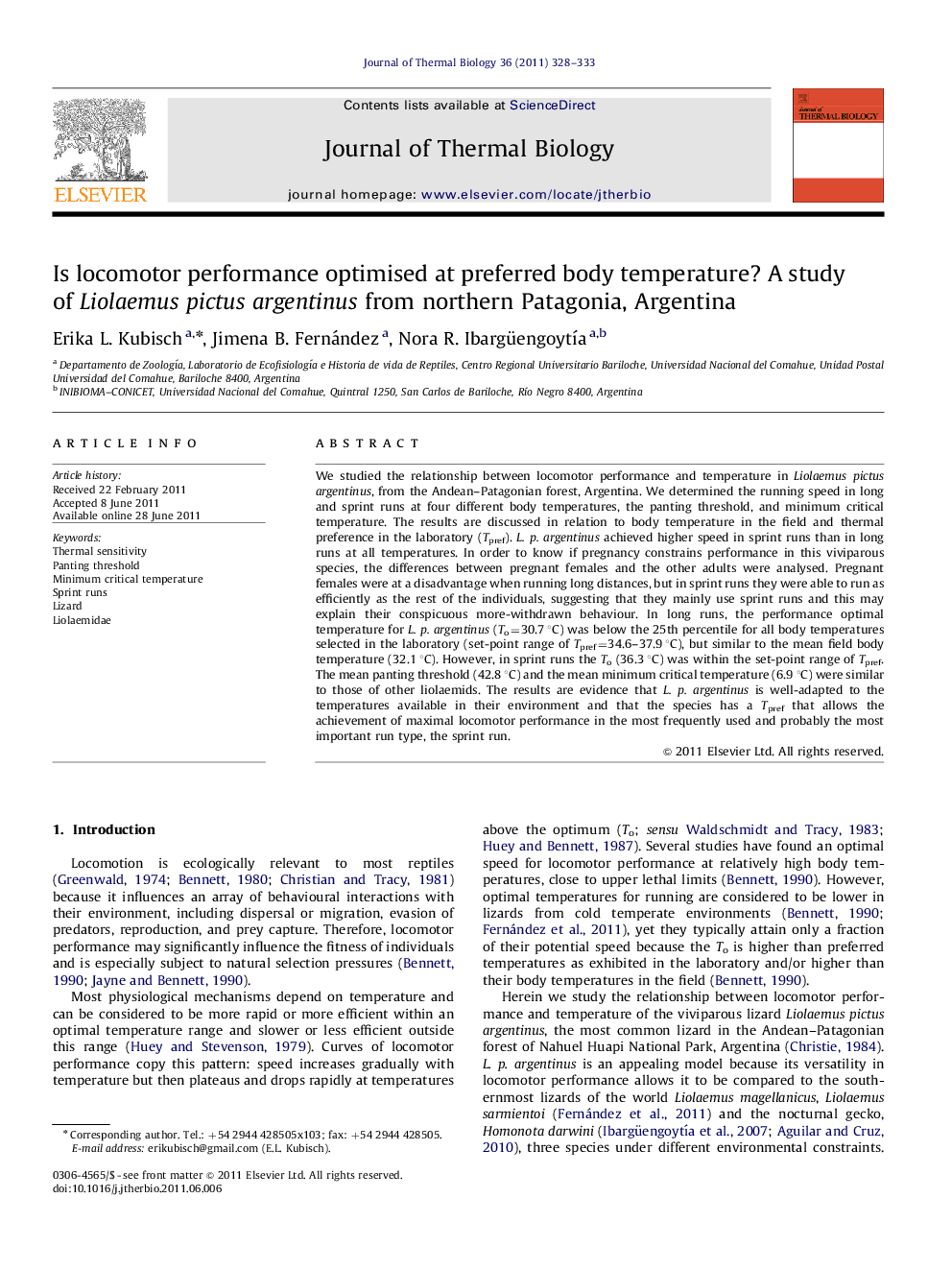| کد مقاله | کد نشریه | سال انتشار | مقاله انگلیسی | نسخه تمام متن |
|---|---|---|---|---|
| 2843337 | 1166088 | 2011 | 6 صفحه PDF | دانلود رایگان |

We studied the relationship between locomotor performance and temperature in Liolaemus pictus argentinus, from the Andean–Patagonian forest, Argentina. We determined the running speed in long and sprint runs at four different body temperatures, the panting threshold, and minimum critical temperature. The results are discussed in relation to body temperature in the field and thermal preference in the laboratory (Tpref). L. p. argentinus achieved higher speed in sprint runs than in long runs at all temperatures. In order to know if pregnancy constrains performance in this viviparous species, the differences between pregnant females and the other adults were analysed. Pregnant females were at a disadvantage when running long distances, but in sprint runs they were able to run as efficiently as the rest of the individuals, suggesting that they mainly use sprint runs and this may explain their conspicuous more-withdrawn behaviour. In long runs, the performance optimal temperature for L. p. argentinus (To=30.7 °C) was below the 25th percentile for all body temperatures selected in the laboratory (set-point range of Tpref=34.6–37.9 °C), but similar to the mean field body temperature (32.1 °C). However, in sprint runs the To (36.3 °C) was within the set-point range of Tpref. The mean panting threshold (42.8 °C) and the mean minimum critical temperature (6.9 °C) were similar to those of other liolaemids. The results are evidence that L. p. argentinus is well-adapted to the temperatures available in their environment and that the species has a Tpref that allows the achievement of maximal locomotor performance in the most frequently used and probably the most important run type, the sprint run.
► L. pictus' performance in long and sprint runs at four temperatures were studied.
► Lizards achieved higher speed in sprint than in long runs at all temperatures.
► Pregnant females ran slower in long runs, but as the rest of the lizards in sprint.
► In sprint runs the optimal temperature (To) was within the set-point range of Tpref.
► In long runs, the To fall below the set-point range of Tpref.
Journal: Journal of Thermal Biology - Volume 36, Issue 6, August 2011, Pages 328–333